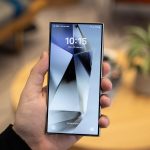What should the legal system think about attempts to publicly identifying people whom one accuses of shameful behavior? What should social norms be on this?
The issue just came up a few days ago as to the lists of names and photos of Harvard students who were allegedly linked to pro-Hamas-attack statements. But the question has come up many times in recent years. Some people label such behavior “doxxing,” including when the only information released is the person’s name and perhaps photograph (as opposed to, say, bank account numbers, social security numbers, home addresses, home phone numbers, etc.). Many are understandably concerned that such behavior can lead not just to ostracism and condemnation, but also to violent attacks or at least threats.
This strikes me as a difficult question as a matter of social norms, precisely because the problem is so common. Any news story that reveals someone’s alleged crimes or misconduct could lead many people to shun the person, some people to send nasty messages to the person, and a few to actually make illegal threats or even engage in physical attacks, especially if the alleged misconduct is seen as especially bad. (Consider, for instance, the identification of the dentist who killed Cecil the lion, which apparently led to threats against the dentist.) Any viral video that shows someone supposedly saying or doing something racist or sexist or otherwise sharply condemned by many people could have the same effect.
As a legal matter, it turns out that the Supreme Court has considered the question, and held that the risk of criminal misconduct by a few readers doesn’t justify blocking such speech from all other readers.
The key case on this is NAACP v. Claiborne Hardware Co. (1982), which stems from a 1966-70 black community boycott of white-owned stores in Claiborne County, Mississippi. (Our legal system often moves very slowly.) The boycott organizers demanded that black customers stop shopping at those stores, and stationed “store watchers” outside the stores to take down the names of black shoppers who were not complying with the boycott. Those names were then read aloud at NAACP meetings at a local black church, and printed and distributed to other black residents. “As stated by the [trial judge], those persons ‘were branded as traitors to the black cause, called demeaning names, and socially ostracized for merely trading with whites.'”
Some of the noncomplying shoppers were also physically attacked for refusing to go along with the boycott:
The testimony concerning four incidents convincingly demonstrates that they occurred because the victims were ignoring the boycott. In two cases, shots were fired at a house; in a third, a brick was thrown through a windshield; in the fourth, a flower garden was damaged. None of these four victims, however, ceased trading with white merchants.
The evidence concerning four other incidents is less clear, but again it indicates that an unlawful form of discipline was applied to certain boycott violators. In April 1966, a black couple named Cox asked for a police escort to go into a white-owned dry cleaner and, a week later, shots were fired into their home. In another incident, an NAACP member took a bottle of whiskey from a black man who had purchased it in a white-owned store. The third incident involved a fight between a commercial fisherman who did not observe the boycott and four men who “grabbed me and beat me up and took a gun off me.” In a fourth incident, described only in hearsay testimony, a group of young blacks apparently pulled down the overalls of an elderly brick mason known as “Preacher White” and spanked him for not observing the boycott….
Various businesses sued, claiming that the boycott tortiously interfered with the businesses’ relationships with their customers, including by frightening away some customers. (That is generally a legally viable sort of claim, setting aside the First Amendment objections.)
Yet the Court held that the First Amendment protected publishing the fact that the noncomplying shoppers were not complying with the boycott—despite the attempt to publicly shame people who were exercising their legal rights to shop at white-owned stores, the natural tendency of such behavior to coerce some people to go along with the boycott, and the eminently foreseeable consequence that there was some violence. Though “[p]etitioners admittedly sought to persuade others to join the boycott through social pressure and the ‘threat’ of social ostracism,” the Court held, “[s]peech does not lose its protected character … simply because it may embarrass others or coerce them into action.” And it doesn’t lose its protected character even when a few of the listeners foreseeably act violently:
Respondents also argue that liability may be imposed on individuals who were … “store watchers” …. There is nothing unlawful in standing outside a store and recording names….
Only those people who themselves “engaged in violence or threats of violence” may be held liable for those incidents, the Court concluded; simply publicizing the noncomplying customers’ names couldn’t lead to liability.
Nor do I think that the result would have been different if the people’s photos were included alongside their names. In a rural county that had 7500 black residents at the time (I looked this up in the Census data), identifying a person by name would have likely made it pretty clear to fellow residents who it was. And to the extent that the name was ambiguous, and the photo helped show which John Smith was being discussed, it would likely have been better and fairer if the photos could have been included, to avoid people ascribing one person’s behavior to another.
I also don’t think that the legal result should be affected by whether the information is posted on the Internet (which, in the Harvard pro-Hamas-attack speech example, might have distinguished the names being posted online from the names being displayed on a truck that was apparently being driven around Cambridge). It’s true that Internet speech is generally visible by more people, so if even 0.01% of all readers act illegally based on it, that could still be a large number. But on the other hand, the speech in Claiborne Hardware was more likely to reach people’s neighbors, who are much more capable of retaliating with real-world violence (as opposed to just nasty e-mails or threats) than are Internet users thousands of miles away.
Of course, not everything that legally may be said should be said, as a matter of ethics or fairness or kindness. Some might argue, for instance, that the organizers of the NAACP Claiborne County boycott could be morally faulted for their actions. (Recall that the people they sought to publicly shame were simply exercising their constitutional rights to shop at stores regardless of the owners’ race.) Others would doubtless disagree.
As I noted, the question of what the norms ought to be here is a complicated one. I have to face it myself in what I write: In most situations, I try to focus my criticisms on issues and actions rather than on people, but I do often mention people’s names in discussing and quoting from court cases (especially since parties’ last names are usually part of the name of the case), and perhaps I have erred in both directions in some of what I’ve done.
But in any event I think it’s important to remember just how commonplace these issues are. If naming names of people who’d rather not be named is “doxxing,” newspapers have long been some of the most dangerous doxxers. If the presence of some risk that some readers or viewers might threaten a person (or just “harass” a person, whatever precisely that might mean) is enough to morally forbid identifying the person, then the worse the behavior, the more improper it becomes to publicly condemn the people who engage in the behavior. If you thought the dentist who killed Cecil was rightly publicly identified, or the black Claiborne County citizens who didn’t go along with the boycott were rightly publicly identified, then how one would distinguish the shaming of students who are responsible for public statements praising Hamas’s killings becomes at least an interesting question (though not necessarily an unanswerable one).
In any event, I’d love to hear what our readers think about this.
Disclosure: I was accused last year by a self-represented frequent litigant of causing people to make threatening phone calls her, when I published a long law review article that in a few passages identified her as the plaintiff in certain pseudonymous lawsuits. The litigant sought a “harassment restraining order” requiring me to remove her name from the online versions of the published article. Unsurprisingly, the Los Angeles Superior Court dismissed her pseudonymous case against me, and ordered that she be depseudonymized, though she is currently appealing those decisions. My views described above long predate that lawsuit.
The post The Cecil-the-Lion-Killing Dentist, Civil Rights Boycott Noncompliers, and Hamas Supporters appeared first on Reason.com.






